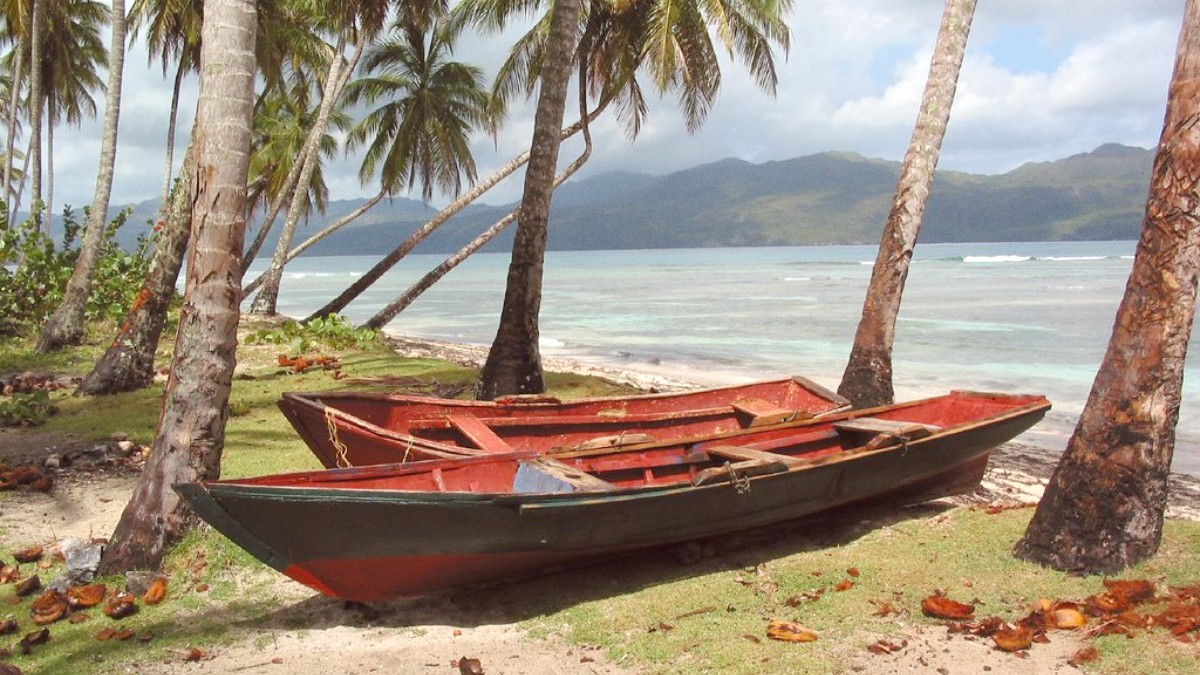
Peninsula De Samana, Dominican Republic
The island's history with diverse populations shapes its food. Staples include plantains, yuca (cassava), various root vegetables, and a wide array of meats and seafood.
As a coastal town, Las Galeras excels in fresh seafood. Expect an abundance of lobster, shrimp, and various local fish caught daily.
Rice, beans (especially red beans), plantains (plátanos), yuca (cassava), chicken, pork, beef, fresh fish and seafood, tropical fruits.
Cilantro, garlic, onions, and peppers. Herbs like oregano and cilantro are aromatic.
Cuisine is savory, often with sweetness from plantains or sauces. It is generally less spicy than other Caribbean cuisines.
The national dish. White rice, red beans, stewed meat (chicken, beef, or pork), and often a side salad.
Find at almost all comedores and local restaurants.
A hearty, thick stew made with various meats (sometimes up to seven types) and root vegetables.
More common in cooler weather or for special occasions.
Mashed fried plantains with garlic, pork cracklings (chicharrón), often served with meat or seafood.
A popular dish found in many restaurants.
Empanadas (fried pastries), Pastelitos (smaller fried pastries), Yaniqueques (flat, crispy fried dough), Arepas (cornmeal cakes), Pincho (skewered grilled meat).
Tostones (twice-fried green plantains), Maduros (sweet fried ripe plantains), Dulce de Leche (caramelized milk sweet), Bizcocho Dominicano (Dominican cake).
Limited options in Las Galeras. Some boutique hotels, like Hotel Villa Serena, offer upscale dining within their premises.
Several options mix Dominican and international cuisine, often with Italian or French influences from the expatriate community.
Comedores are small, local, informal restaurants serving daily specials at very affordable prices.
Due to an European expatriate community, Las Galeras has good Italian and French restaurants.
Pizzerias also offer casual dining choices.
Beyond local fare, these international spots contribute to the town's varied dining landscape.
Consider exploring these for a change of pace.
A small local market for fresh produce, fish, and groceries.
Good for self-catering, though not a formal "food hall."
Larger public markets with more variety are found in Samana town.
Explore to experience local daily commerce.
Rice, beans, and grilled meats/fish are naturally gluten-free.
Be cautious of sauces and fried items due to potential cross-contamination. Use "sin gluten" (without gluten).
Be explicit about allergies. A translation card is advisable for severe allergies.
Language barriers can pose challenges in smaller eateries.
Self-catering from the local market and supermarkets is the most reliable way to manage strict dietary requirements.
Always confirm ingredients. Fried foods may share oil with meat products.
Formal cooking classes are rare. Some guesthouses with long-term residents or private chefs might offer informal lessons upon request.
No structured food tours are specific to Las Galeras.
Informal visits to small local farms or cacao plantations in the wider Samana area are possible.
No major food festivals are specific to Las Galeras.
Local festivals may feature special traditional foods and dishes.
Engage with locals at comedores for informal culinary insights.
A direct way to learn about Dominican home cooking.
For a broader range of tours that might include food-related activities, consider checking GetYourGuide, a platform for booking attractions and experiences.
While no direct affiliate for restaurants, many listed establishments accept popular credit cards. Always carry some local currency (DOP) for smaller eateries and street vendors.
Purchasing ingredients from the local market directly supports the community. This also a good way to discover fresh, seasonal produce.
Tipping is customary. A 10% service charge is often included, but an additional 5-10% is appreciated for good service.